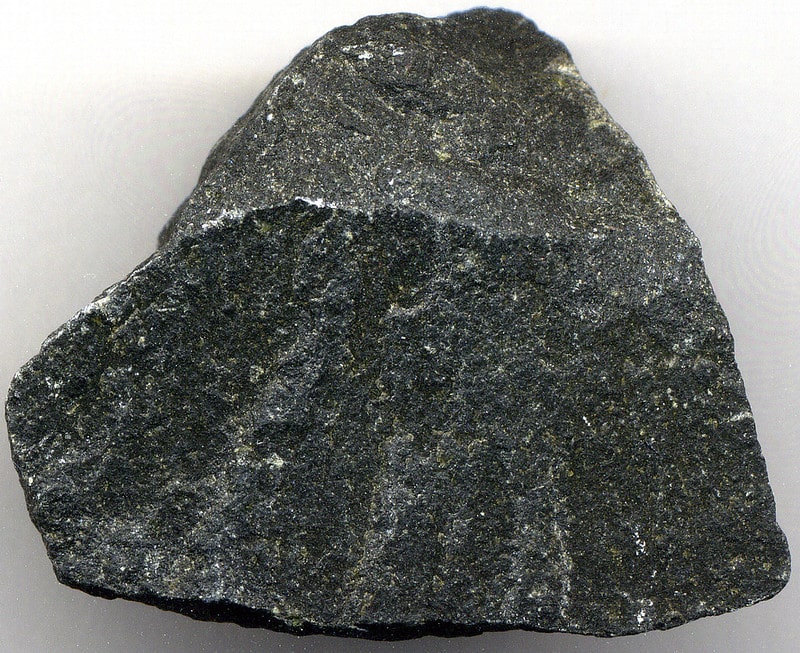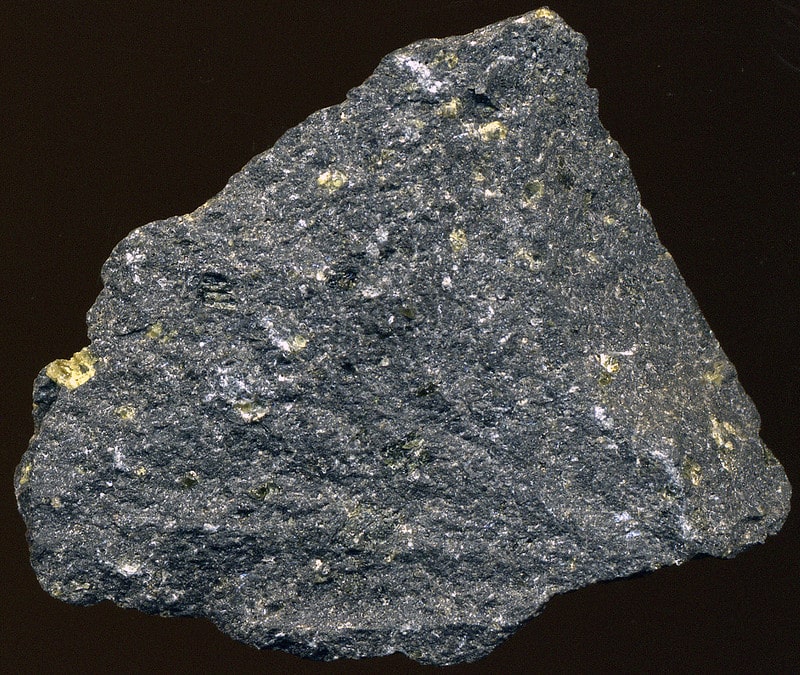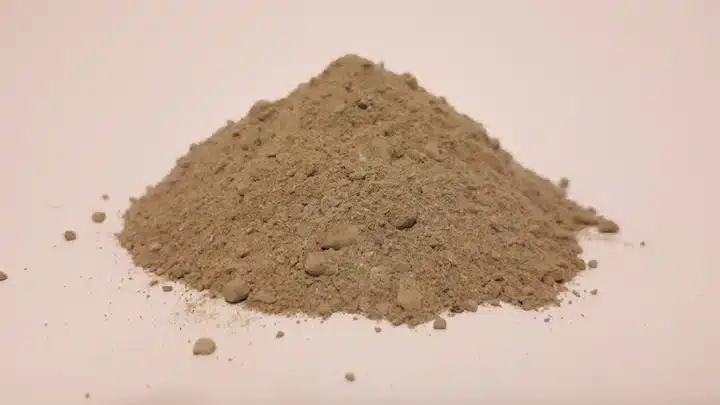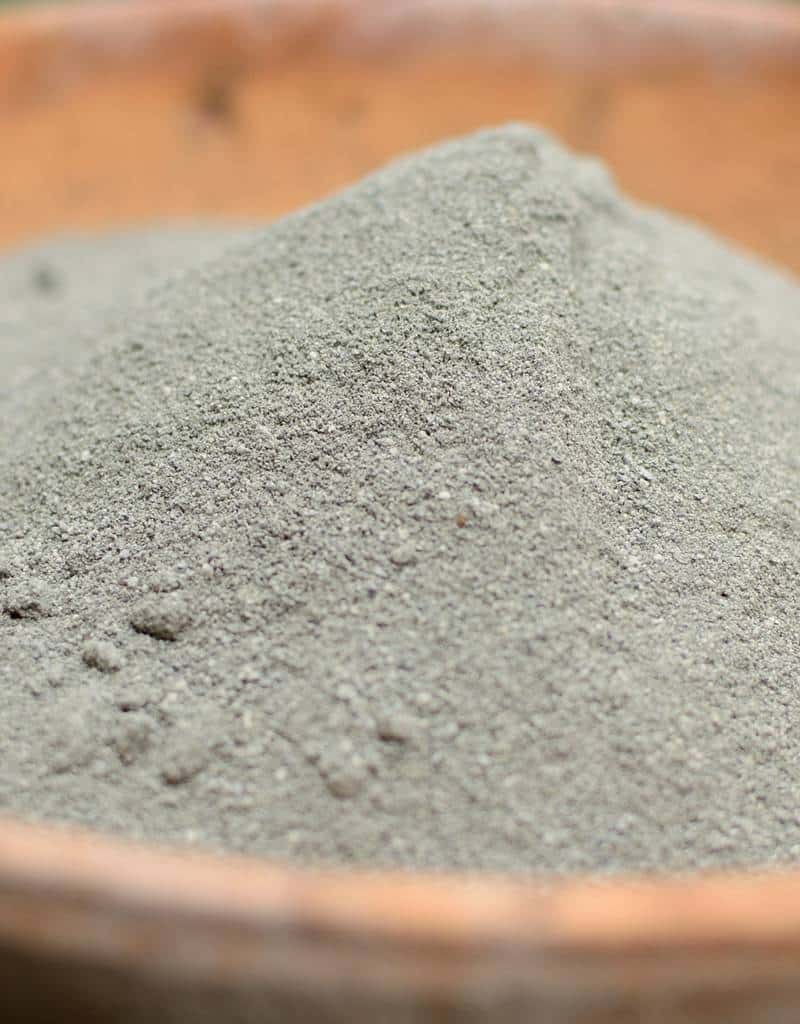What is basalt flour?
Basalt flour is a finely ground rock that is obtained by crushing basalt rock. Basalt is a volcanic rock that occurs in large quantities on Earth. The rock contains many minerals, including those that can absorb and store CO₂.
In agriculture and horticulture, the umbrella term primary rock flour is also used for flour made from diabase or basalt. This is used to generally improve soil fertility and water storage capacity in home gardens and in organic fruit and wine growing.
How does the use of basalt flour as CO₂ storage work?
The idea behind using basalt flour as CO₂ storage is simple: the basalt flour is introduced into soils or oceans and distributed there. The minerals in the basalt powder then react with the carbon dioxide in the air or water and store it as carbonate. The carbonate then remains bound in the soil or water for a long time and no longer contributes to the greenhouse effect. what the natural weathering of basalt looks like on her blog.
What are the advantages of basalt flour as a CO₂ storage?
Using basalt flour as CO₂ storage has several advantages. On the one hand, the material is available in large quantities and is relatively cheap. Basalt is found all over the world, and the rock can be ground relatively easily. On the other hand, the method is also relatively easy to use. The basalt powder can easily be added to soils or oceans without the need for complex technologies.
A 2020 study calculated that the weathering of silicate rock (basalt consists predominantly of silicates) in China, India, the USA and Brazil alone could bind around 0.5 to 2 gigatons of carbon dioxide per year. Depending on the location, the costs would be between $80 and $180 per ton of CO₂.
The Potsdam Institute for Climate Impact Research has looked in detail at the effort and potential costs of this technology. We currently emit around 40 billion tonnes of carbon dioxide per year, of which natural weathering stores around 1 billion. To store an additional billion in this way, a whopping 3 billion tons of basalt would have to be mined - that's about half of the world's annual coal production. This requires areas that correspond to around 20 percent of global agricultural land. Not to forget the gigantic effort involved in mining and grinding the rock.
Are the risks of basalt flour as a CO₂ storage known?
Despite the promising benefits, there are also risks to using basalt flour as CO₂ storage. One problem is that not all soils or seas are equally suitable. Basalt flour works best on soils or seas with a high pH because the minerals in basalt rock react best at high pH levels. In soils or seas with a low pH value, basalt flour can hardly bind carbon dioxide.
Another problem is that the reaction between basalt flour and CO₂ is relatively slow. It can take years or even decades for the basalt powder to bind the CO₂. This means that the method does not work quickly enough to combat climate change in the short term.
Current study: Net release of carbon dioxide possible
A recent study in Nature even considers the use of basalt flour to be counterproductive and dangerous. It suggests that increased weathering can destabilize the natural carbon cycle in tropical peatlands, which act as important carbon sinks and protect against coastal erosion.
Potential carbon uptake would be reduced by 18 to 60 percent through the re-release of CO₂ on land and possibly completely offset by emissions from coastal waters. The results show the importance of researching the response of different soil types to increased weathering before applying it.
The FAZ spoke to one of the study authors, Alexandra Klemme , who explains her method: “We carried out a model study for accelerated weathering on Sumatra.” This showed that a large part of the bound carbon dioxide is outgassed again. The reason is that the weathering processes increase the pH value of the acidic peat soil. This in turn facilitates the activity of microbes, which decompose organic material and release carbon dioxide.
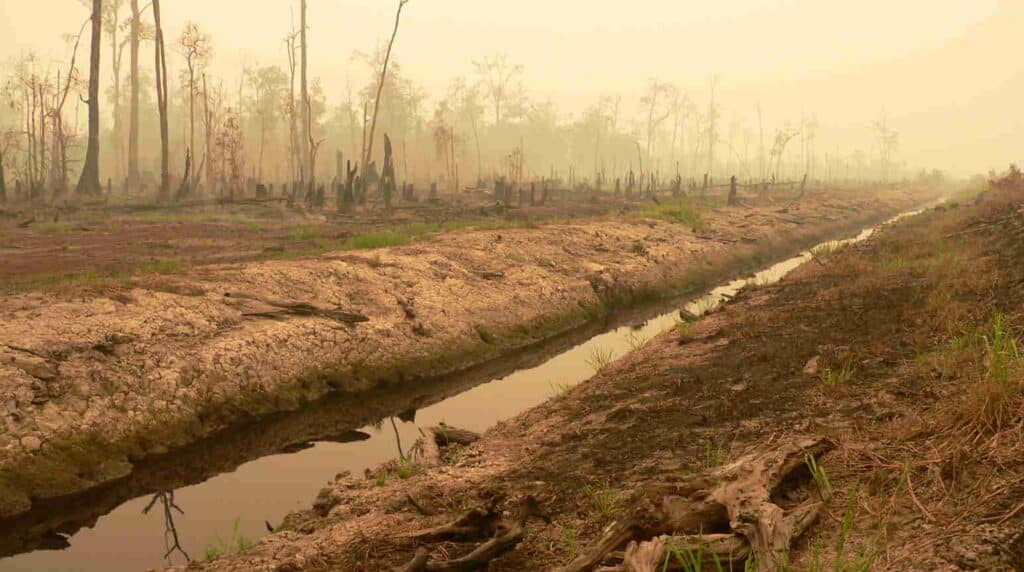
Conclusion
Basalt flour as a CO₂ storage is a promising method in the fight against climate change. The method has some advantages, such as the availability of the material and the ease of application. However, there are also risks and disadvantages, such as the slow response and limited suitability for some soils and seas. Basalt flour can be a useful addition to other measures in the fight against climate change, but it is definitely not a miracle cure.
Sources: Nature , FAZ , PIK Potsdam
Our current fact checks:
TikTok trend: Dog food instead of protein bars
No exploding electric car at a gas station
Bee death and its effects on agriculture and the environment
Notes:
1) This content reflects the current state of affairs at the time of publication. The reproduction of individual images, screenshots, embeds or video sequences serves to discuss the topic. 2) Individual contributions were created through the use of machine assistance and were carefully checked by the Mimikama editorial team before publication. ( Reason )


